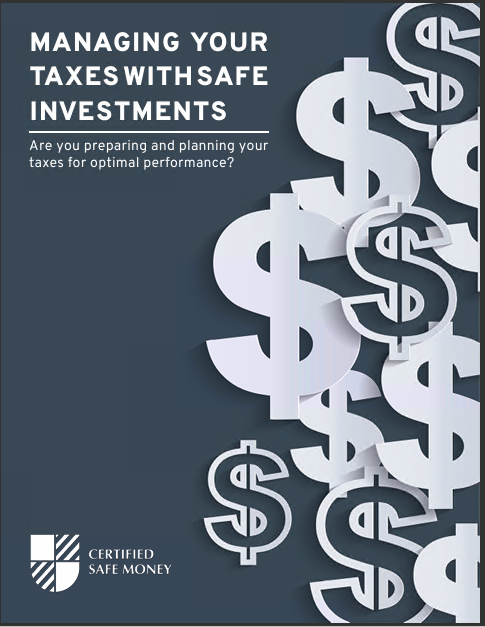Key Takeaways
- Life insurance is often misunderstood, leading to widespread myths that can prevent people from making informed decisions about their financial future.
- Debunking common life insurance myths helps individuals understand the true benefits and necessities of life insurance, ensuring they are adequately protected.
The Truth Behind Life Insurance Myths: What’s Real and What’s Not
Life insurance is a vital component of a sound financial plan, yet it remains shrouded in misconceptions and myths that can deter people from securing the coverage they need. Misunderstandings about cost, necessity, and complexity contribute to these myths. Here, we unravel the truth behind the most common life insurance myths to help you make informed decisions about protecting your family’s future.
Myth 1: Life Insurance Is Too Expensive
One of the most pervasive myths about life insurance is that it is prohibitively expensive. Many people believe that premiums are beyond their financial reach, but this is often not the case. The cost of life insurance varies widely based on factors such as age, health, and the amount of coverage.
Reality: Life insurance can be surprisingly affordable, especially for younger, healthier individuals. Term life insurance policies, in particular, offer substantial coverage at lower premiums compared to whole life policies. For example, a healthy 30-year-old might pay as little as $20 per month for a 20-year term policy with a $500,000 death benefit. By shopping around and comparing quotes, you can find a policy that fits your budget.
Myth 2: Only the Breadwinner Needs Life Insurance
Another common misconception is that life insurance is only necessary for the primary income earner in a family. This myth overlooks the valuable contributions of non-working spouses or stay-at-home parents.
Reality: The loss of a non-working spouse can have significant financial implications, including the cost of childcare, housekeeping, and other domestic duties. Life insurance can provide the necessary funds to cover these expenses, ensuring the family maintains its standard of living. Both partners in a family should consider life insurance to safeguard their financial future.
Myth 3: My Employer’s Life Insurance Is Sufficient
Many employees rely solely on the life insurance provided by their employer, assuming it is adequate to meet their family’s needs. However, this can be a risky assumption.
Reality: Employer-provided life insurance is often limited, typically offering coverage equal to one or two times the employee’s annual salary. This amount may be insufficient to cover long-term expenses such as mortgage payments, college tuition, and daily living costs. Additionally, if you change jobs or lose your job, you may lose this coverage. Having a personal life insurance policy ensures continuous and adequate protection regardless of employment status.
Myth 4: Life Insurance Payouts Are Taxable
A common fear is that life insurance payouts will be subject to significant taxes, reducing the benefit received by beneficiaries.
Reality: In most cases, life insurance death benefits are not subject to federal income tax. Beneficiaries receive the full amount of the policy’s death benefit, providing financial security without the burden of taxes. However, it’s essential to consult with a financial advisor to understand specific tax implications, particularly for large estates.
Myth 5: Young and Healthy People Don’t Need Life Insurance
Many young adults believe they do not need life insurance until they are older or have dependents, assuming that their youth and good health shield them from the need for coverage.
Reality: Life insurance is most affordable when you are young and healthy. Locking in a policy at a lower premium can save significant money over time. Additionally, life insurance is not just about death benefits; some policies offer living benefits, such as borrowing against the policy’s cash value for emergencies or investments. Securing life insurance early also provides peace of mind and financial security for future dependents.
Myth 6: Life Insurance Is Only for End-of-Life Expenses
Some people believe that life insurance is solely for covering funeral costs and final expenses, underestimating its broader financial benefits.
Reality: While life insurance can cover end-of-life expenses, its benefits extend far beyond that. Life insurance can replace lost income, pay off debts, fund children’s education, and provide a financial safety net for the surviving family members. It can also be a tool for estate planning, helping to cover estate taxes and preserve wealth for future generations.
Myth 7: It’s Too Complicated to Get Life Insurance
The perceived complexity of purchasing life insurance can deter people from exploring their options. The process of choosing the right policy and understanding the terms can seem overwhelming.
Reality: With advancements in technology and the availability of professional guidance, buying life insurance has become more straightforward. Many insurers offer online tools and resources to help you compare policies and get quotes easily. Additionally, working with a knowledgeable insurance agent can simplify the process, ensuring you understand your options and choose the best policy for your needs.
Myth 8: Life Insurance Isn’t Necessary If You’re Wealthy
Wealthy individuals might assume they do not need life insurance due to their financial security and extensive assets.
Reality: Life insurance can still play a crucial role in estate planning for wealthy individuals. It can provide liquidity to pay estate taxes, ensuring that assets do not have to be liquidated hastily. Life insurance can also help in equalizing inheritances among heirs, particularly when the estate includes illiquid assets like real estate or a family business.
Myth 9: Pre-existing Conditions Make Life Insurance Unattainable
People with pre-existing health conditions often believe they cannot obtain life insurance or that it will be exorbitantly expensive.
Reality: While pre-existing conditions can impact premiums, it is still possible to secure life insurance. Many insurers offer policies tailored to individuals with various health conditions, sometimes at reasonable rates. It is important to shop around and consider working with an insurance broker who can help find a suitable policy.
Myth 10: Once a Policy Is Purchased, There’s No Need to Review It
A common misconception is that once you buy a life insurance policy, you can forget about it, assuming it will always meet your needs.
Reality: Life insurance needs can change over time due to changes in family circumstances, income, debts, and financial goals. Regularly reviewing and updating your policy ensures it continues to meet your needs and provides adequate coverage. Life events such as marriage, the birth of a child, or purchasing a home should trigger a review of your life insurance policy.
Final Thoughts: Unveiling the Realities of Life Insurance
Debunking these common myths about life insurance highlights the importance of understanding the true value and necessity of coverage. Life insurance is a flexible and essential component of financial planning, providing peace of mind and financial security for you and your loved ones. By recognizing the realities behind these myths, you can make informed decisions that align with your financial goals and protect your family’s future.
Contact Information:
Email: biancachavez@bedrockfs.com
Phone: 6029307914














